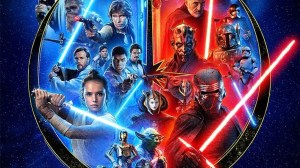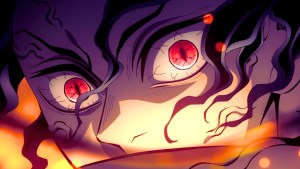DC Comics set the standard for what superheroes could be decades ago. Their Golden Age superheroes made a huge impact on the comic buying public of the late 30s and 40s, and they decided to put all of them in one place. This created the comic superteam as we know it and it would reach its ultimate iteration with the Justice League. The Justice League took the DC heroes of the Silver Age — Superman, Batman, Wonder Woman, the Flash, Green Lantern, and Aquaman — and combined them with Martian Manhunter to create the greatest team in the history of the DC Multiverse. The Justice League is on a level of their own, and took superheroes to another level. The popularity of the Justice League was so much that it got Marvel back in the superhero comic game. That’s right, the Justice League is so powerful they basically created the entire Silver Age Marvel Universe to compete with it. There is no other team on the level of the Justice League in comics. Sure, the Avengers are more popular because of the MCU, but the Avengers would never exist without the Justice League.
Videos by ComicBook.com
The example of the Justice League has been taken up by multiple heroes over the years, and the DC Multiverse is full of amazing teams. While most of them aren’t on the level of the Justice League, there are some teams that are. They’ve become icons in their own right, their legacies reaching much further than they could have possibly imagined. These three DC teams are the best the publisher has to offer that aren’t the Justice League, groups of heroes who have accomplished feats that other hero teams could only dream of.
1) The Justice Society of America
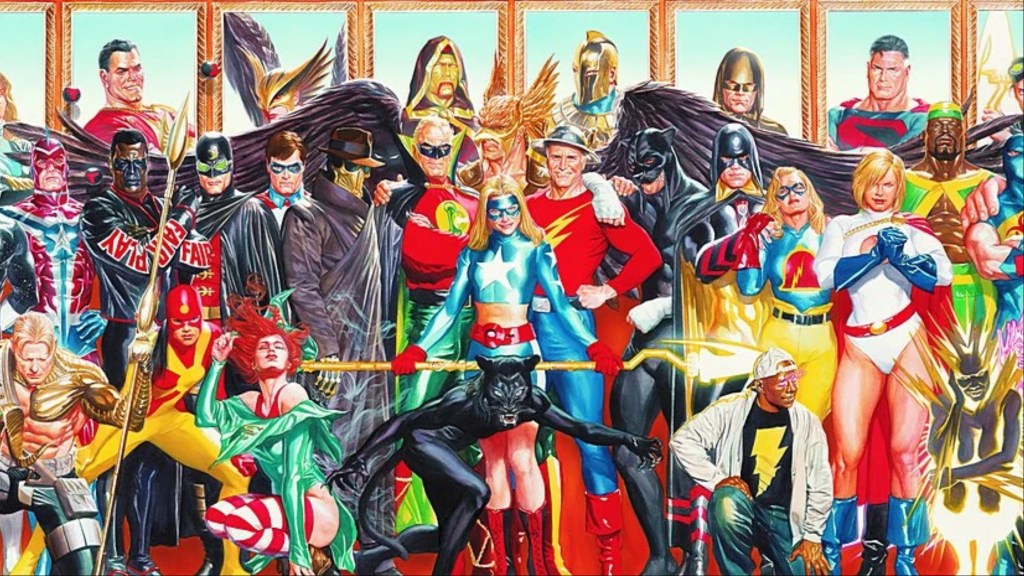
The Justice League is DCs greatest team, but they aren’t DC’s first. That distinction goes to the Justice Society of America. The original superteam consisted of Green Lantern (Alan Scott), the Flash (Jay Garrick), Hawkman, Hawkgirl, Mister Terrific I, Wildcat I, Doctor Fate I, the Sandman I, Hourman I, Starman I, Black Canary I, Johnny Thunder, the Atom, and Wonder Woman, with Batman and Superman joining the team. They were the protectors of the American homefront, battling the Ultra-Humanite and the Injustice Society of America, taking down Nazis, and basically helping protect the world at what many thought was its most desperate moment. The Justice Society went above and beyond the call of duty and created an entire generation of superhero fans.
As everyone but Batman, Superman, and Wonder Woman faded away, the Justice Society would disappear as well, and the team’s big guns would see their mantles passed down to new heroes. Soon, the Justice League, created by the amazing Gardner Fox, the same man who created the Justice Society, would take its place as DC’s foremost team. The Justice League would presage the return of the Justice Society, as fans got the greatest crossover of the Silver Age in Justice League of America (Vol. 1) #21, beginning a raft of crossovers between the two teams that would make Earth-Two one of the most vital parts of the Silver and Bronze Age DC Multiverse. The Justice Society was a hit with fans, and soon they got their own sidekicks and teen characters, Earth-Two becoming a going concern throughout the ’70s and ’80s in books like the returning All-Star Comics and Infinity Inc. as well as back-up stories across DC’s line. However, the Justice Society wasn’t able to take advantage of the creative renaissance of Crisis on Infinite Earths and it faded away. However, as legacy became more important to the modern age DC Universe, the heroes of the Golden Age and their descendants would start to pop back up, leading to one of the best team books of all time: JSA.
JSA took the surviving heroes of the original JSA — Jay Garrick, Alan Scott, and Wildcat with Hawkman rejoining down the road, combining them with legacy heroes like Jack Knight, Hawkgirl, Hector Hall as Doctor Fate, Stargirl (although she was called Stars at first), Sands, Black Canary II (the story of Black Canary is super interesting, but for another time), Doctor Mid-Nite III, Mister Terrific II, Jakeem Thunder, Hourman II, Power Girl, and many more. It was a team of multiple generations, each one teaching the other the ropes. It was brilliant and made a whole new generation of readers fall in love with the Justice Society. Since then, the Justice Society have had a loud corps of fans, constantly taking DC to task anytime their favorites are gone for too long. If the Justice League is the current defense force, than the Justice Society is next line of defense, combining wisdom and power in a very potent package.
2) The Legion of Superheroes
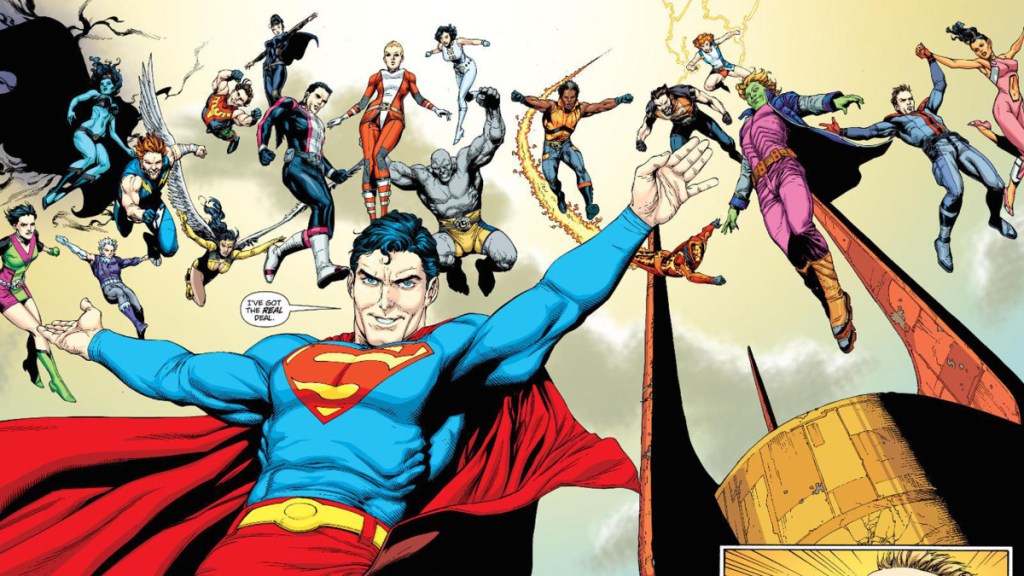
The Legion of Superheroes is another team that predates the Justice League and has had arguably as large an impact on the lore of the DC Multiverse as the Justice League. The Legion of Superheroes first appeared in 1958’s Adventure Comics #247, when the team’s three main members — Lightning Boy (he’s the best of the three and I won’t hear anyone say otherwise), Cosmic Boy, and Saturn Girl — came back in time to meet Superboy, whose adventures would show them that teenagers could make a difference in the universe. The Legion of Superheroes is a force of teenagers from around the 31st (well, 30th century during their 20th century appearances) century who all wanted to be like Superboy. They used the powers their races had and took on simplistic superhero names, and so the Legion of Superheroes was born.
RELATED: 7 DC Comics Moments I’m Still Not Over
People think the X-Men are complicated, and they are, but they took a lot of ideas from the Legion (and artist Dave Cockrum, whose original designs for several X-Men came from characters he wanted to put into the Legion). The Legion is massive, with well over thirty members, and half of the fun of the team is labyrinthine network of relationships between team members. Legion stories star a bunch of beautiful hormonal teens all in the same building (and the pre-Crisis Legion headquarters had no windows), so the fireworks fly at times. There are little cliques within the Legion as well, and that’s before we get to the Legion of Substitute Heroes of the Espionage Squad. Getting into the Legion is one of the most daunting propositions in the superhero comic fandom.
The changing tides of DC continuity destroyed the Legion of Superheroes’ popularity, as all of the changes to the history of the DC made it so the team kept being rebooted. In fact, in the 21st century alone there were five reboots, with six Legions (including the Darkseid Legion appearing in the DC All-In publishing initiative) having appeared since the year 2000. Comics can be confusing enough, but the Legion of Superheroes take that to the next level. However, that doesn’t change just how amazing the Legion of Superheroes are. Are they terribly convoluted? Of course. Are some amazing stories from creators who truly have a passion for the series? Absolutely. Give the Legion a try and see (plus, the more people who buy Legion books, the better chance that we’ll get a another reboot).
3) The Teen Titans
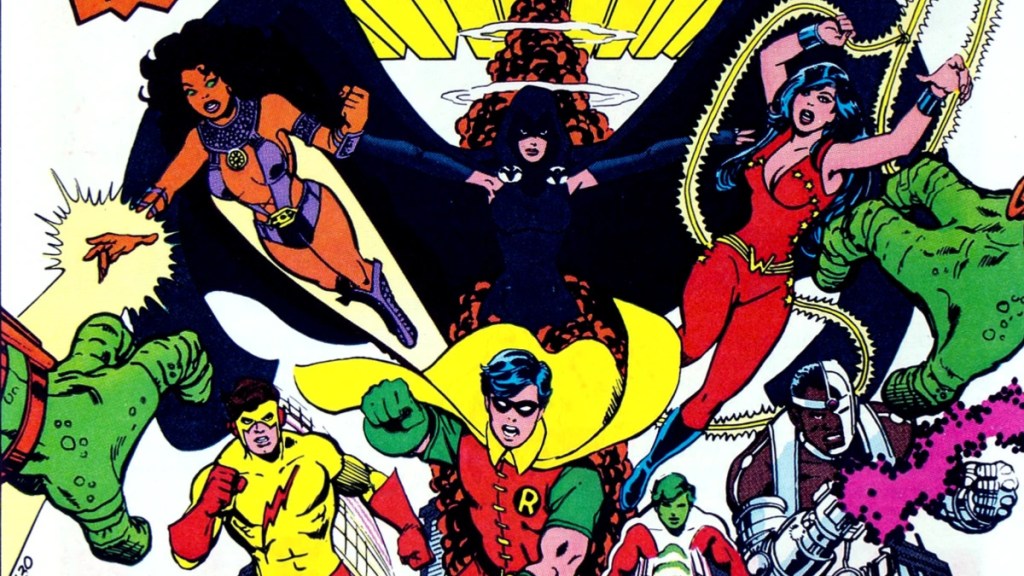
The Teen Titans weren’t the first teen superteam — Marvel had their own Young Allies team of teen sidekicks in the Golden Age — but they are definitely the most popular. Fans loved the sidekicks of the DC Multiverse in the Silver Age, with Robin, Kid Flash, Aqualad, Speedy, and Wonder Girl becoming very popular with young readers. DC decided to put them together, with Robin, Kid Flash, and Aqualad coming together as the Teen Titans in 1964’s The Brave and the Bold #54. Soon, Speedy and Wonder Girl would join the team and they would get their own solo series after appearances in anthology books across DC’s publishing line. Soon, new members like Lilith, Bumblebee, Mal Duncan, Gnarrk the Caveboy, Golden Eagle, Hawk and Dove, and others joined the team and they became the swinging teen teams of the ’60s. Later Teen Titans mastermind writer Marv Wolfman would even write some of the issues of the original Teen Titans before the book was cancelled. However, that was only the beginning for the Teen Titans.
In 1980, writer Marv Wolfman and artist/co-writer George Perez teamed together to bring the Teen Titans back as the New Teen Titans in the book of the same name. Robin, Kid Flash, and Wonder Girl were joined by new teen heroes Raven, Cyborg, Starfire, and Beast Boy. A sensation was born and New Teen Titans became the bestselling DC book on the stands, standing toe to toe with the X-Men at the height of their powers at the top of the sales charts. The New Teen Titans were the perfect teen team, and fans loved them for it. Their popularity faded as the ’80s went on, but the Teen Titans became an important part of the superhero ecosystem of the DC Universe. The New Teen Titans would eventually become the Titans, grown up superheroes working side by side with their mentors battling the greatest threats around. The Teen Titans has also returned as a sidekick/teen team, with Cyborg, Raven, Starfire, and Beast Boy teaming with legacy heroes and training them as superheroes.
The Teen Titans are far below their old heights, but that doesn’t change their place in the DC Universe. Trinities are a big deal in the DC superhero community; there’s Superman, Batman, and Wonder Woman as the leaders of the community. Jay Garrick, Alan Scott, and Hawkman are the Trinity of the Golden Age heroes. And there’s a Trinity of teams — the Justice League, the Justice Society, and the Teen Titans. Each of them play an important role — the Justice League are the stars, the Justice Society are the keepers of the flame, and the Teen Titans are the new generation. They are massively important to the whole community.
What DC teams do you think are better than the Justice League? Sound off in the comments below.


